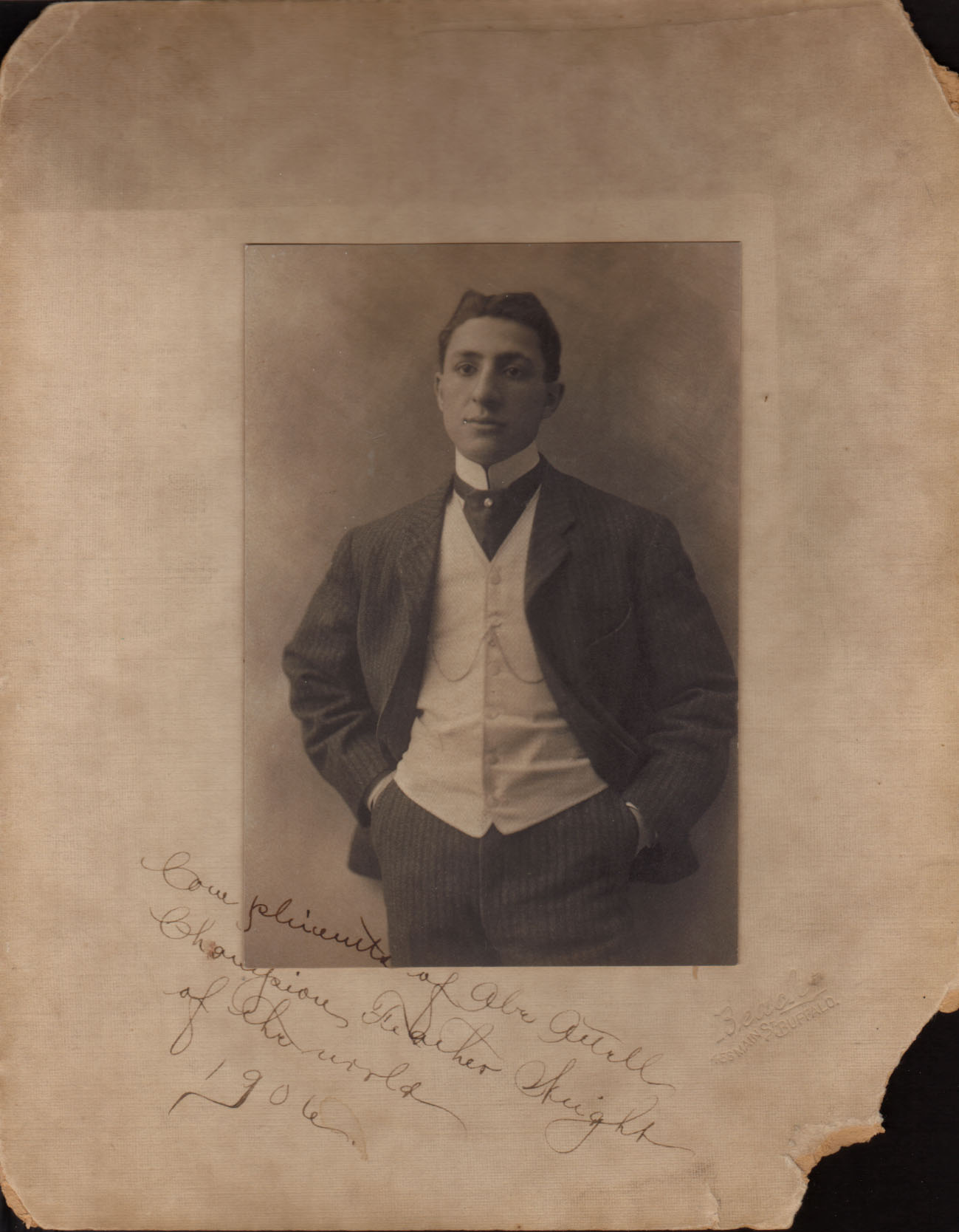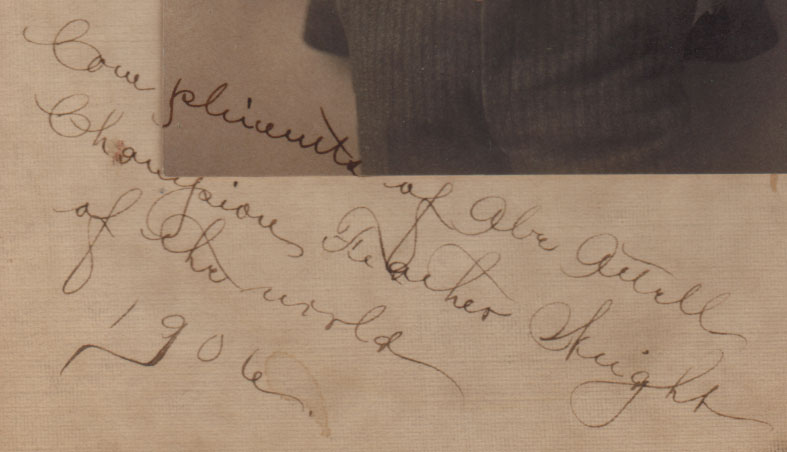| |
Like many
boxers
of his time, Attell learned to fight on the
streets. In his case, he was protecting himself from
Irish-American kids who didn't like having the son
of Jewish immigrants living in the neighborhood.
And, like many such fighters, he learned to punch
first--but then he learned to box from experts such
as George Dixon.
At 5-foot-4, Attell was a natural featherweight, but he
fought and beat many of the best lightweights
around, as well as several welterweights who
outweighed him by twenty-five pounds or more.
His first professional fight was in 1900. He claimed the
vacant featherweight championship after beating
former champion George Dixon in a 15-round decision
on October 28, 1901. Tommy Sullivan knocked Attell
out in 5 rounds on October 13, 1904, and claimed the
title but his claim wasn't recognized because he was
over the weight limit.
Three of Attell's title defenses were classic fights against
English boxers, none of which resulted in a
decision. He fought a 25-round draw and a 23-round
draw against Owen Moran in 1908, and on February 19,
1909, he and English lightweight champion Jem
Driscoll fought a 10-round no-decision contest that
Nat Fleischer of Ring magazine called "one of the
best exhibitions of ring science ever seen in New
York."
Attell lost the title on a 20-round decision to Johnny
Kilbane on February 22, 1912. He continued fighting
into 1915. An attempted comeback ended abruptly when
he was knocked out by Phil Virgets in the 4th round
on January 8, 1917.
Two years later, Attell became involved in baseball's "Black
Sox Scandal" as the representative of gambler Arnold
Rothstein. It was Attell who gave $10,000 to several
Chicago
White
Sox
players who had agreed to throw the
World
Series
with Cincinnati. When the scandal broke in
1920, Attell went to Canada for a year to avoid
being subpoenaed.
Attell won 91 of his 168 fights, 47 by knockout. He lost 10,
3 by knockout, and also had 17 draws and 50
no-decisions. |
|


